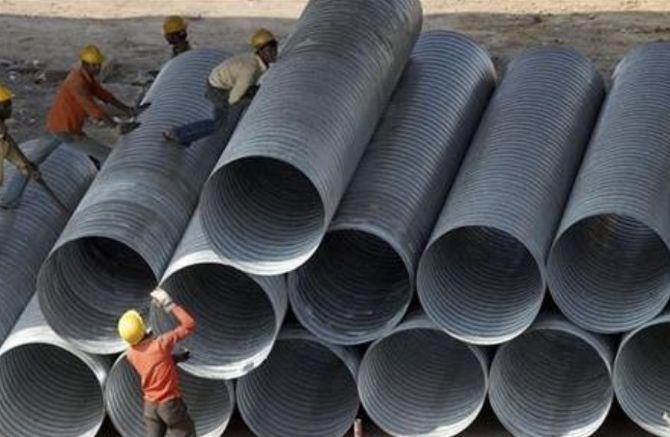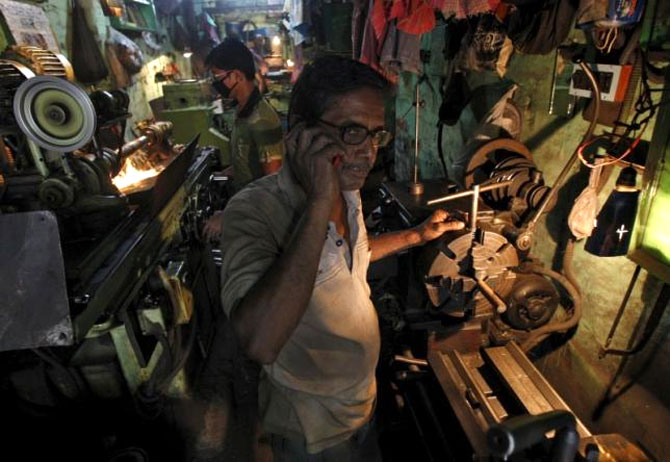A bleak demand outlook for steel in the domestic as well as global market is also another reason Tata Steel may be looking to have additional liquidity as margins are expected to take a hit in the coming quarters.

Tata Steel, the oldest steel producer in the country, is looking to raise up to Rs 10,000 crore after the Reserve Bank of India (RBI) last month decided to provide additional liquidity to the system hit by the coronavirus disease (COVID-19) pandemic.
“The amount raised from the market would be mostly kept as additional liquidity buffer by the company and can be used to make any immediate short-term debt repayments that may arise post this lockdown,” a source close to the development told Business Standard.
Tata Steel is not the only company looking to raise funds to take advantage of the liquidity provided by the central bank.
Mukesh Ambani-led Reliance Industries on April 2 said its board had approved a proposal to raise up to Rs 25,000 crore through NCDs.
Sources said Bharti Airtel could also be raising around Rs 10,000 crore.
As a pre-emptive measure to meet any frictional liquidity requirements on account of dislocations due to the COVID-19 outbreak, the RBI decided to conduct the fine-tuning variable rate repo auctions for Rs 1 trillion, the central bank had said in a statement last month.
On March 27, the regulator decided to expand liquidity in the system “to sizeably ensure that financial markets and institutions are able to function normally in the face of Covid-related dislocations”.
The RBI also reinforced monetary transmission so that “bank credit flows on easier terms are sustained to those who have been affected by the pandemic”.
A bleak demand outlook for steel in the domestic as well as global market is also another reason Tata Steel may be looking to have additional liquidity as margins are expected to take a hit in the coming quarters.
The ongoing pandemic across globe has led to a nationwide lockdown that is likely to continue until April 30.
This has impacted steel demand further.
“We see risks looming large for domestic steel prices in view of considerable premium to regional as well as export prices and demand uptick is expected to remain subdued in the medium term,” Edelweiss Research said in a note.
Tata Steel's gross debt at the end of December 2019 was Rs 1,09,867 crore while the net debt stood at Rs 1,04,628 crore.
The firm made an operating loss of Rs 236.58 crore in October-December 2019.
Moody’s Investors Service in its report recently said the COVID-19 outbreak exacerbates the already challenging operating environment for steelmakers around the world.
The macroeconomic weakness spreading in the wake of the pandemic is driving down demand for steel in core industries like manufacturing, automotive, construction, and oil and gas exploration.
On the production side, Tata Steel has confirmed that its blast furnace was operating, but that could change swiftly.
Tata Steel's $180-200 a tonne profit is higher than peers like JSW, which makes $120-130 a tonne.
“However, this year, we expect profitability to decline and credit metrics to weaken,” said Moody’s report.
In July 2019, Tata Steel had plans to raise $600 million, partly to refinance loans and partly to fund the capital expenditure of phase two expansion at its Kalinganagar plant in Odisha.
The company had also set a target of reducing gross debt by $1 billion in FY20, after Tata Steel's merger of its European operations with ThyssenKrupp fell apart following failure to meet Europe's antitrust requirements.
Though the firm’s debt/Ebitda ratio as on FY19 stood at 3.2, it is much lower than 8.87 noted in FY17, which was the highest since FY10.
The Moody’s report said India’s steel consumption was expected to grow at 2-2.5 per cent in 2020, largely in line with the GDP growth forecast of 2.5 per cent.
The 21-day lockdown will hurt steel sales in March and April.
The 2020 figure is much less than the 7.5 per cent steel consumption growth during the year ended March 31, 2019, it said.
Photograph: Babu/Reuters










